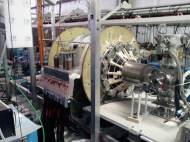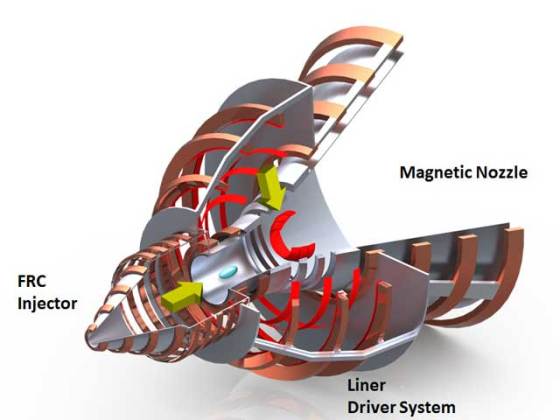Fusion powered rocket for faster interplanetary voyages
 University of Washington researchers and scientists at MSNW, a Redmond-based space-propulsion company, are building components of a fusion-powered rocket that could accelerate interplanetary traveling. The researchers claim that once perfected, fusion-powered rockets could enable 30- and 90-day expeditions to Mars. That could lead to significantly lower traveling time, costs, as well as crew’s health risks.
University of Washington researchers and scientists at MSNW, a Redmond-based space-propulsion company, are building components of a fusion-powered rocket that could accelerate interplanetary traveling. The researchers claim that once perfected, fusion-powered rockets could enable 30- and 90-day expeditions to Mars. That could lead to significantly lower traveling time, costs, as well as crew’s health risks.
NASA estimates a round-trip human expedition to Mars would take more than four years using current technology. While there are some efforts in the private sector to send a couple of astronauts to Mars on a travel that would last for half a year, the sheer amount of chemical rocket fuel needed in space would be extremely expensive – the launch costs alone would be more than $12 billion.
MSNW researchers demonstrated successful lab tests of all portions of the process which involves operation of a fusion-powered rocket. Now, the key will be combining each isolated test into a final experiment that produces fusion using this technology.
So, how does it work? The research team has developed a type of plasma that is encased in its own magnetic field. Nuclear fusion occurs when this plasma is compressed to high pressure with a magnetic field. The powerful magnetic field causes large metal rings to implode around plasma, compressing it to a fusion state.
The converging rings merge to form a shell that ignites the fusion, however, this process lasts only for a few microseconds. Even though the compression time is very short, the amount of released energy can quickly heat and ionize the shell which gets ejected out of the rocket nozzle at a high velocity. The researchers assume that this process can be repeated every minute or so, thus providing propulsion to the spacecraft.
The UW-MSNW team has successfully demonstrated the metal-crushing process in the UW Plasma Dynamics Laboratory in Redmond. Now, the team is working to bring it all together by using the technology to compress the plasma and create nuclear fusion and they hope to have everything ready for a first test at the end of the summer.
According to lead researcher John Slough, Research Director at MSNW and UW research associate professor of aeronautics and astronautics, the mechanical process and equipment used to construct the actual fusion-powered rocked are reasonably straightforward and should function well in space. In actual space travel, the researchers would switch from aluminum (which was used to demonstrate the process) to lithium because it is more reactive.
Nuclear fusion may draw concern because of its application in nuclear bombs, but its use in this scenario is very different. The fusion energy for powering a rocket would be reduced by a factor of 1 billion from a hydrogen bomb and only a small amount of fusion is needed to power a rocket – a small grain of sand of this material has the same energy content as 3.8 liters (1 gallon) of rocket fuel.
Also, the concept proposed by the UW-MSNW team uses a strong magnetic field to contain the fusion fuel and guide it safely away from the spacecraft and any passengers within.
For more information, check the list of papers available at this page.










Not a convincing fusion rocket engine design, and it appears it requires a small nuclear fission reactor to supply the electricity to run it.